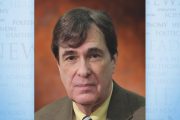According to the PISA (Program for international Student Assessment) 2012 test, the smartest kids in the world are Asians: students in Shanghai-China, South Korea, Singapore, Hong-Kong, Taiwan, and Japan.
The 2012 test (the latest, as it is conducted every three years) assessed the abilities of 15-year-olds in 65 countries in reading, math, and science. A total of 510,000 students took the test. In 44 countries, 85,000 students took an optional test in problem solving. Again, Asians proved to be the best problem solvers. According to the PISA report:
Students in Hong Kong-China, Korea, Macao-China, Shanghai-China, Singapore and Chinese Taipei performed strongest on problems that require understanding, formulating or representing new knowledge, compared to other types of problems.
The U.S. score was 492, just below the mean score of 500.
The PISA test is the brainchild of a German physicist, Andreas Schleicher, who came to believe that education was a science and that educational achievement could be measured scientifically through the right kind of testing. The Organization of European Economic Cooperation (OECD) decided to incorporate the PISA test as part of its broader economic program, since it was obvious that economic development is closely tied to a nation’s educational achievements.
The OECD was established in 1948 to run the U.S.-financed Marshall Plan for reconstruction in Europe ravaged by World War II. Its website states:
By making individual governments recognise the interdependence of their economies, it paved the way for a new era of cooperation that was to change the face of Europe. Encouraged by its success and the prospect of carrying its work forward on a global stage, Canada and the US joined OEEC members in signing the new OECD Convention on 14 December 1960. The Organisation for Economic Co-operation and Development (OECD) was officially born on 30 September 1961, when the Convention entered into force.
The first PISA-OECD test took place in 2009. Since then it has become a thorn in the side of American educators. In 2009, Finland and South Korea ranked highest in reading, math, and science. The United States ranked 17th in reading, 31st in math, and 23rd in science.
The deficiencies of American education were plain for the world to see.
In a recent book by former Time magazine writer Amanda Ripley entitled The Smartest Kids in the World, the author confronts the “mystery” of American education: “Why were some kids learning so much — and others so little?” She was determined to find out what the top performing nations were doing that was so different from what American schools were doing.
In 2010-11, she chose to follow the experiences of three American high school students who had applied to American Field Service (AFS) to become exchange students: Kim from Oklahoma wanted to go to Finland; Eric from Minnesota to South Korea; and Tom from Pennsylvania to Poland. The three would become the author’s field agents in what were the three top educational performers according to the PISA tests.
Ms. Ripley actually took the PISA test herself to see what it was like. She found that it was not just a test of facts. “It was a test of the ability to do something with facts.” She writes:
PISA demanded fluency in problem solving and the ability to communicate; in other words, the basic skills I needed to do my job and take care of my family in a world choked with information and subject to sudden economic change.
Above all, the PISA measured critical thinking skills. And so Ripley decided to visit Finland, South Korea, and Poland to see what they were doing right and what we were doing wrong.
It did not take long to see what the Finns were doing right: The training of Finnish teachers was far more rigorous and intellectually demanding than anything to be found in America. Ripley writes:
In Finland, all education schools were selective. Getting into a teacher-training program there was as prestigious as getting into medical school in the United States…. “A Finnish teacher has received the highest level of education in the world.” [Emphasis in original.]
In the United States, the only thing needed to get into a college of education is a pulse. The dumber you are the better, for you will be required to do things that defy logic and common sense. As long as you like children, you’re in. American public school teachers are probably the world’s most ignorant. They don’t even know how to teach reading in the proper phonetic manner. That is why American public schools produce so many functional illiterates.
There is not a college of education in the entire country that tells its future teachers how to teach reading properly by intensive phonics. Rudolf Flesch recognized that in 1955 when he wrote in Why Johnny Can’t Read: “The teaching of reading — all over the United States, in all the schools, in all the textbooks — is totally wrong and flies in the face of all logic and common sense.” And not much has changed since that was written.
Finnish children are taught to read by the most intelligent and best educated teachers on the planet. These teachers have not been hobbled by a John Dewey-type educational philosopher determined to dumb down a nation in order to prepare it to give up its constitutional Republic for a socialist fantasy. Such perversion of purpose never entered the minds of Finnish educators. Nor did the Finns find the right way to educate overnight. Ripley writes:
The Finns decided that the only way to get serious about education was to select highly educated teachers, the best and brightest of each generation, and train them rigorously. So that’s what they did. It was a radically obvious strategy that few countries have attempted.
The results have made Finland into an educational superpower and Finnish students the world’s smartest. Americans have long given up on their public schools being able to produce high academic achievement. Our schools develop loyalty through team sports. The high-school football team represents the glory of the school rather than its nerds who are actually interested in learning something.
If true education reform is to take place in America, it will have to begin with how our colleges of education recruit future teachers and how these teachers are educated and trained. It is unlikely that this can take place in a system controlled at the top by radical progressives. In other words America is stuck with dumbed-down teachers and dumbed-down students for the foreseeable future.
Related articles:
Who Are the World’s Smartest Kids? Part 2




